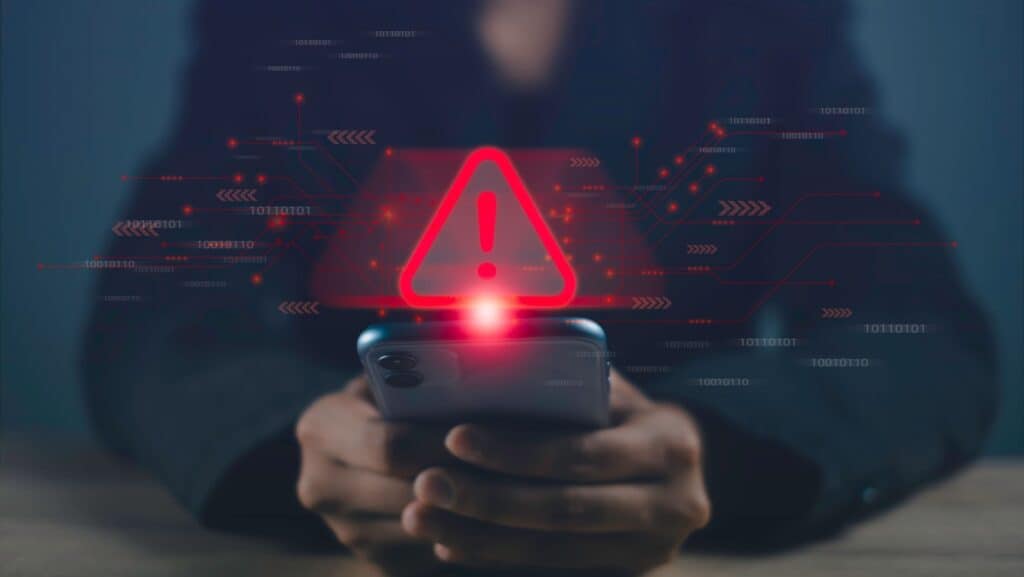Your Lifeline in A Crisis: Connect To These 10 Critical U.S. Alert Systems
In times like these, when threats ranging from natural disasters to cyber-attacks are ever-present, it’s completely normal to feel anxious about staying informed. You might be asking yourself, “How can I make sure I know what’s happening when an emergency strikes?”
Fortunately, the United States has developed a sophisticated network of emergency alert systems designed specifically to keep you informed and safe. These systems cover a wide array of potential emergencies, ensuring that whether it’s a looming hurricane or a national security threat, you’ll receive timely and accurate information to help you navigate any situation.
The Warning Systems We Currently Have

Emergencies can strike without warning, and the key to minimizing their impact often lies in rapid communication. Recognizing this, the U.S. government has implemented multiple layers of emergency communication systems. These systems are not standalone; they work in tandem to cover various threats, leveraging technology to disseminate information swiftly and effectively.
1. Wireless Emergency Alerts (WEAs)

Wireless Emergency Alerts are concise, text-like messages sent directly to mobile devices in specific geographic areas. Authorized by entities such as state and local public safety officials, the National Weather Service, and even the President, WEAs are designed to bypass typical network congestion, ensuring immediate delivery.
These alerts can cover anything from imminent weather dangers to AMBER alerts for missing children. The specificity of WEAs allows authorities to target affected areas precisely, reducing unnecessary alarm elsewhere.
2. Emergency Alert System (EAS)

The Emergency Alert System is a national public warning system that enables the President to address the nation within 10 minutes during a national crisis 2. It utilizes a vast array of communication channels, including broadcast television, radio, and satellite services.
But the EAS isn’t just for presidential messages. Local and state authorities frequently use it to disseminate urgent information, such as severe weather warnings or evacuation orders. By leveraging multiple media outlets, the EAS ensures that even those without access to mobile devices receive critical updates.
3. NOAA Weather Radio (NWR)

Operated by the National Oceanic and Atmospheric Administration, the NOAA Weather Radio All Hazards network provides continuous weather information directly from the nearest National Weather Service office.
While its primary focus is weather-related emergencies, NWR also broadcasts alerts for non-weather incidents, including national security threats and environmental hazards. It’s a reliable source for real-time updates, especially valuable in areas prone to severe weather.
4. Integrated Public Alert and Warning System (IPAWS)

The Integrated Public Alert and Warning System is FEMA’s comprehensive platform for emergency alerts. IPAWS integrates various alert systems, including WEAs, EAS, and NWR, allowing authorities to send a single message through multiple channels simultaneously.
This integration ensures consistent messaging across different platforms, reducing confusion and ensuring that alerts reach as many people as possible, regardless of their preferred communication medium.
5. FEMA Mobile App

The FEMA Mobile App is a versatile tool that offers real-time alerts, safety tips, and disaster resources. Users can receive notifications for up to five locations nationwide, making it ideal for keeping track of loved ones in different areas.
The app also provides information on open shelters and recovery centers, helping those affected by disasters find assistance quickly.
6. National Terrorism Advisory System (NTAS)

In response to evolving terrorist threats, the National Terrorism Advisory System provides timely information about potential risks. NTAS issues Bulletins and Alerts that outline the nature of the threat, potential targets, and recommended actions for the public and first responders.
By keeping the public informed about terrorism-related threats, NTAS enhances community vigilance and preparedness.
7. Health Alert Network (HAN)

Managed by the Centers for Disease Control and Prevention, the Health Alert Network is the primary method for sharing crucial public health information. During health crises like pandemics or outbreaks, HAN ensures that health officials, clinicians, and the public receive timely updates.
This system played a significant role during the COVID-19 pandemic, distributing guidelines and updates as the situation evolved.
8. State and Local Alert Systems

Beyond federal systems, many states and local governments have established their own alert mechanisms. These can include text messaging services, automated phone calls, and local media broadcasts.
These localized systems provide area-specific information, such as road closures, utility outages, or localized evacuation orders, complementing national alerts by addressing community-specific needs.
9. Social Media Alerts

Government agencies increasingly leverage social media platforms to disseminate emergency information rapidly. Platforms like Twitter and Facebook enable real-time communication with the public.
While social media is not an official alert system, it serves as a valuable tool for reaching a broad audience quickly. Following official accounts of agencies like FEMA, the CDC, and local emergency management offices can provide timely updates during crises.
10. Digital Road Signs

Digital road signs are often used to convey urgent messages to motorists. In situations like sudden weather changes, accidents, or evacuation orders, these signs can alert drivers promptly.
They are especially useful for communicating with those who might not be actively monitoring their phones or radios while driving.
Evaluating the Effectiveness of the Emergency Alert System (EAS)

The Emergency Alert System has been instrumental in delivering critical information during emergencies, but how effective is it in practice?
Widespread Coverage

The EAS’s strength lies in its broad reach. By utilizing multiple channels like TV, radio, and satellite services, it ensures that alerts penetrate even areas with limited technology access. This widespread coverage is crucial during events that disrupt typical communication infrastructures.
Rapid Dissemination

In emergencies, every second counts. The EAS enables the President to address the nation swiftly, a feature designed for scenarios requiring immediate national attention. This rapid dissemination capability extends to local authorities who use the system for urgent alerts.
Integration and Redundancy

By being part of the Integrated Public Alert and Warning System (IPAWS), the EAS benefits from integration with other alert platforms. This redundancy ensures that if one channel fails, others can compensate, enhancing overall reliability.
Demonstrated Successes

There are numerous instances where the EAS and related systems have effectively saved lives. For example, during severe weather events, timely alerts have enabled people to seek shelter promptly, reducing casualties.
Challenges and Areas for Improvement

Despite its strengths, the EAS faces challenges:
- Accessibility Issues: Some users have reported problems with text crawls overlapping with closed captions or being difficult to read due to size or speed. Addressing these concerns is vital for ensuring that alerts are accessible to all, including those with disabilities.
- Geographic Gaps: Certain local authorities may lack full access to IPAWS, leading to potential gaps in alert dissemination 10. Efforts are ongoing to expand coverage and ensure uniform access nationwide.
- Public Awareness: The effectiveness of the EAS also depends on public awareness. If people are not familiar with the system or how to respond to alerts, its impact diminishes.
Ongoing Improvements

Federal agencies like FEMA and the FCC are continuously working to enhance the EAS. Upgrades include improving the precision of geographic targeting and conducting regular tests to assess system performance.
How to Ensure You Receive Emergency Alerts and Respond Appropriately

Being prepared isn’t just about the systems in place; it’s also about individual actions. Here’s how you can ensure you’re ready when emergencies strike.
Enable Wireless Emergency Alerts on Your Mobile Device

For iPhone Users:
- Go to Settings.
- Select Notifications.
- Scroll down to Government Alerts.
- Enable Emergency Alerts and Public Safety Alerts.
For Android Users:
- Open Settings.
- Tap Safety & emergency.
- Select Wireless emergency alerts.
- Ensure Allow alerts is toggled on.
Sign Up for Local Emergency Alerts
Local governments often have their own alert systems:
- Search for your county’s emergency management website.
- Look for options to sign up for alerts.
- Provide necessary contact information, like your phone number and address.
Conclusion

The United States’ multi-faceted approach to emergency communication reflects a commitment to public safety. By harnessing various technologies and platforms, these alert systems ensure that critical information reaches citizens promptly, regardless of where they are or what they’re doing.
Take Care Of Yourself And Family

Staying informed is a shared responsibility. By familiarizing yourself with these systems and ensuring your devices are set up to receive alerts, you contribute to your own safety and that of your community.
How Safe Is Your Child’s School? 6 Critical Questions Parents Need to Ask

In an era where school safety concerns are paramount, parents and caregivers play a crucial role in ensuring their children’s well-being. While schools bear the primary responsibility for student safety, informed and engaged parents can significantly contribute to creating a secure learning environment.
READ: How Safe Is Your Child’s School? 6 Critical Questions Parents Need to Ask
Join Us

Join us on this empowering journey as we explore, celebrate, and elevate “her story.” The Queen Zone is not just a platform; it’s a community where women from all walks of life can come together, share their experiences, and inspire one another. Welcome to a space where the female experience takes center stage. Sign up for our newsletter so you don’t miss a thing, Queen!







